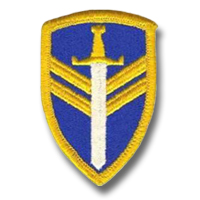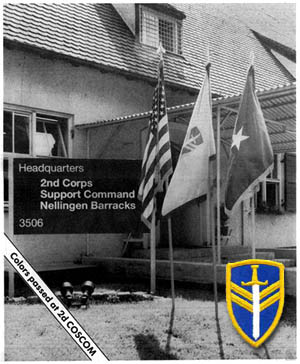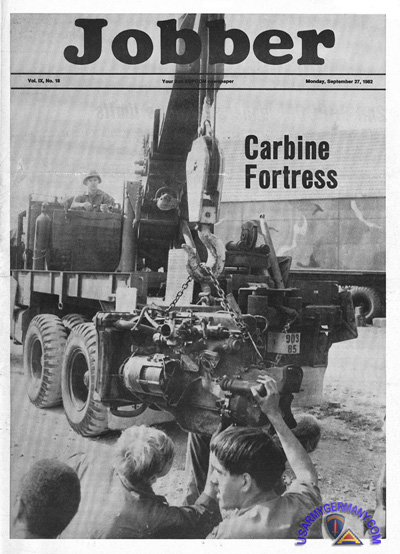| If you do NOT see the Table of Contents frame to the left of this page, then Click here to open 'USArmyGermany' frameset |
||||||||||||||||||||||||||||||||||||||||||||||||||||||||||||||||||||||||||||||||||||||||||||||||||||||||||||||||||||||||||||||||||||||||||||||||||||||||||||||||||
|
2nd Support Command |
||||||||||||||||||||||||||||||||||||||||||||||||||||||||||||||||||||||||||||||||||||||||||||||||||||||||||||||||||||||||||||||||||||||||||||||||||||||||||||||||||
|
|
||||||||||||||||||||||||||||||||||||||||||||||||||||||||||||||||||||||||||||||||||||||||||||||||||||||||||||||||||||||||||||||||||||||||||||||||||||||||||||||||||
|
||||||||||||||||||||||||||||||||||||||||||||||||||||||||||||||||||||||||||||||||||||||||||||||||||||||||||||||||||||||||||||||||||||||||||||||||||||||||||||||||||
|
|
||||||||||||||||||||||||||||||||||||||||||||||||||||||||||||||||||||||||||||||||||||||||||||||||||||||||||||||||||||||||||||||||||||||||||||||||||||||||||||||||||
 |
||||||||||||||||||||||||||||||||||||||||||||||||||||||||||||||||||||||||||||||||||||||||||||||||||||||||||||||||||||||||||||||||||||||||||||||||||||||||||||||||||
| VII Corps Support Command History | ||||||||||||||||||||||||||||||||||||||||||||||||||||||||||||||||||||||||||||||||||||||||||||||||||||||||||||||||||||||||||||||||||||||||||||||||||||||||||||||||||
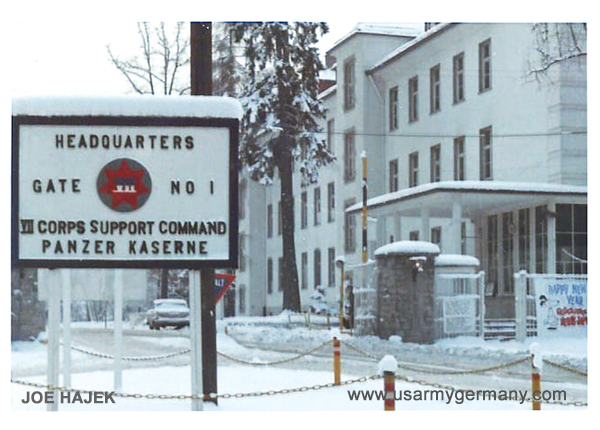 Entrance to Panzer Kaserne, home of VII Corps Support Command, c. 1969 (Joe Hajek) |
||||||||||||||||||||||||||||||||||||||||||||||||||||||||||||||||||||||||||||||||||||||||||||||||||||||||||||||||||||||||||||||||||||||||||||||||||||||||||||||||||
| 1969 - 1973 | ||||||||||||||||||||||||||||||||||||||||||||||||||||||||||||||||||||||||||||||||||||||||||||||||||||||||||||||||||||||||||||||||||||||||||||||||||||||||||||||||||
| (Source: 52nd Anniversary, 1918 - 1970. The JAYHAWK Anniversary Issue, August 19, 1970.) | ||||||||||||||||||||||||||||||||||||||||||||||||||||||||||||||||||||||||||||||||||||||||||||||||||||||||||||||||||||||||||||||||||||||||||||||||||||||||||||||||||
| A young command,
the VII Corps Support Command (VII COSCOM)
was formed in March 1969 as part of the 'new look' in USAREUR and
Seventh Army, designed to keep combat elements and support services
on a ready-for-action basis. Units forming the new command were: 1st, 71st, 87th and 303d Maintenance Bns, 35th and 95th Supply and Service (S&S) Bns, 4th Transportation Bn, 101st Ordnance Bn, Personnel and Administration Bn, Special Troops and the 6930th Civilian Labor Gp. The only change in the original unit alignment has been the addition of the 116th Ordnance Det, arriving in Germany Jan. 28, 1970, to provide direct rocket and missile maintenance support to units of VII Corps. Under the new command, the replacement regulating detachment at Panzer Kaserne was established and became fully operational June 26, 1969, when the first shipment of replacements for VII COSCOM and VII Corps non-divisional units was received. In order to show their combat readiness, Headquarters VII COSCOM and elements of the 35th and 95th S&S Bns, 87th and 303d Maintenance Bns, and 6930th Civilian Labor Gp participated in their first field exercise, Exercise Certain Check, Oct. 24-30, 1969. Units of VII COSCOM were instrumental in preparation of equipment for the March NATO Exercise, Arctic Express. Elements of the 35th S&S Bn, 71st, 87th and 303d Maintenance Bns provided support to the highly successful Exercise Car Crew III, which tested the Reforger concept during May and June 1970. The second field exercise that VII COSCOM participated in, Exercise Front Centre '70, took place in May. Soon after the formation of the command, units and troops throughout VII COSCOM celebrated their first German-American and German-American-French Weeks with numerous activities throughout the Jobber area. Continuing the tradition of good international relations, Headquarters VII COSCOM invited French and German military personnel and their families to the July 4th celebration this year at Panzer Kaserne. About 5,000 Americans, Germans and French took part in the day-long event. In another July event, VII COSCOM officers, including Brig. Gen. John T. Peterson, present Jobber commander, joined French officers in a 5-mile march which ended with a French and American picnic near Bebenhausen. Although only a little over a year old, the command has had many accomplishments and successes in its short span, and is continually changing to provide the best in support services to VII Corps area units. |
||||||||||||||||||||||||||||||||||||||||||||||||||||||||||||||||||||||||||||||||||||||||||||||||||||||||||||||||||||||||||||||||||||||||||||||||||||||||||||||||||
| (Source: STARS & STRIPES, June 28, 1969) | ||||||||||||||||||||||||||||||||||||||||||||||||||||||||||||||||||||||||||||||||||||||||||||||||||||||||||||||||||||||||||||||||||||||||||||||||||||||||||||||||||
| VII Corps Support Command (VII COSCOM) was activated in June 1969 to replace 3rd Support Brigade (of the former Seventh Army Support Comd). During a ceremony held at Kelley Barracks on June 26, Maj Gen Lawrence E. Schlanser assumed command of the new unit. The nine battalions of VII COSCOM remain unchanged in their roles of technical support to VII Corps. |
||||||||||||||||||||||||||||||||||||||||||||||||||||||||||||||||||||||||||||||||||||||||||||||||||||||||||||||||||||||||||||||||||||||||||||||||||||||||||||||||||
| 1976 | ||||||||||||||||||||||||||||||||||||||||||||||||||||||||||||||||||||||||||||||||||||||||||||||||||||||||||||||||||||||||||||||||||||||||||||||||||||||||||||||||||
| (Source: USAREUR/Seventh Army STATION LIST, 1 June 1976) | ||||||||||||||||||||||||||||||||||||||||||||||||||||||||||||||||||||||||||||||||||||||||||||||||||||||||||||||||||||||||||||||||||||||||||||||||||||||||||||||||||
| 2nd COSCOM ORGANIZATION - 1 JUNE 1976 | ||||||||||||||||||||||||||||||||||||||||||||||||||||||||||||||||||||||||||||||||||||||||||||||||||||||||||||||||||||||||||||||||||||||||||||||||||||||||||||||||||
|
||||||||||||||||||||||||||||||||||||||||||||||||||||||||||||||||||||||||||||||||||||||||||||||||||||||||||||||||||||||||||||||||||||||||||||||||||||||||||||||||||
| CORRECTIONS: (1) Source: Email from ... The 182nd CS Co was part of the 71st Ord Bn. In 1986, this unit was redesignated and reorganized as the 317th Ord Co . |
||||||||||||||||||||||||||||||||||||||||||||||||||||||||||||||||||||||||||||||||||||||||||||||||||||||||||||||||||||||||||||||||||||||||||||||||||||||||||||||||||
|
|
||||||||||||||||||||||||||||||||||||||||||||||||||||||||||||||||||||||||||||||||||||||||||||||||||||||||||||||||||||||||||||||||||||||||||||||||||||||||||||||||||
| MISCELLANEOUS INFORMATION: (Jan 1973): VII COSCOM serves about 100,000 people in a 44,000 square-mile area of central and southern Germany. (Augusr 1982) A Class III Yard is operated by the 226th S&S Company near Stuttgart (probably Osterholz). One officer (1st Lt) and 15 enlisted men work there. The yard supplies all petroleum, oil and lubrication products for units stationed in Stuttgart and Heilbronn areas (communities). (Source: JOBBER, Aug 16, 1982) |
||||||||||||||||||||||||||||||||||||||||||||||||||||||||||||||||||||||||||||||||||||||||||||||||||||||||||||||||||||||||||||||||||||||||||||||||||||||||||||||||||
| 2nd SUPCOM History | ||||||||||||||||||||||||||||||||||||||||||||||||||||||||||||||||||||||||||||||||||||||||||||||||||||||||||||||||||||||||||||||||||||||||||||||||||||||||||||||||||
| 1973 - 19.. | ||||||||||||||||||||||||||||||||||||||||||||||||||||||||||||||||||||||||||||||||||||||||||||||||||||||||||||||||||||||||||||||||||||||||||||||||||||||||||||||||||
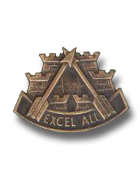 2nd
Support Command DUI 2nd
Support Command DUI |
||||||||||||||||||||||||||||||||||||||||||||||||||||||||||||||||||||||||||||||||||||||||||||||||||||||||||||||||||||||||||||||||||||||||||||||||||||||||||||||||||
| (Source: The Champion, July 19, 1989) | ||||||||||||||||||||||||||||||||||||||||||||||||||||||||||||||||||||||||||||||||||||||||||||||||||||||||||||||||||||||||||||||||||||||||||||||||||||||||||||||||||
| History of
2d COSCOM The 2d Corps Support Command was initially activated as the 2d Support Brigade on June 24, 1965. The Brigade was one of three support Brigades assigned to the Seventh Army Support Command. |
||||||||||||||||||||||||||||||||||||||||||||||||||||||||||||||||||||||||||||||||||||||||||||||||||||||||||||||||||||||||||||||||||||||||||||||||||||||||||||||||||
|
||||||||||||||||||||||||||||||||||||||||||||||||||||||||||||||||||||||||||||||||||||||||||||||||||||||||||||||||||||||||||||||||||||||||||||||||||||||||||||||||||
| On October 11, 1988 2d Support Command (Corps) was redesignated as 2nd Corps Support Command. The 2d COSCOM provides maintenance, logistical, ammunition transportation and medical support within the VII Corps area which covers the southern area of the Federal Republic of Germany. The 2d COSCOM is organized with the 7th Support Group consisting of the 1st, 71st, and 87th Maintenance Battalions and the 13th Supply and Services Battalion providing direct support maintenance, repair parts, supply and service support to the Corps' Non-divisional Units; the 30th Medical Group, the Corps' only organic medical support unit; the 4th Transportation Battalion, the 101st Ordnance Battalion, the 7th Battalion, 159th Aviation Regiment which provides aviation intermediate maintenance support; the Special Troops Battalion and the 6930th Civilian Support Center, a German civilian group-sized organization which provides maintenance, ammunition, repair parts and security services. In partnership with the 2d COSCOM, the Unterstützungskommando 5, a 1,200 soldier German Support Command supplements the 2d COSCOM's capabilities in the areas of POL storage and transport, ammunition, security, maintenance, transportation, and casualty evacuation in the event of war. The 2d COSCOM is the home of the most modern logistical support provided by the most technically and tactically proficient soldiers in the world today. |
||||||||||||||||||||||||||||||||||||||||||||||||||||||||||||||||||||||||||||||||||||||||||||||||||||||||||||||||||||||||||||||||||||||||||||||||||||||||||||||||||
|
|
||||||||||||||||||||||||||||||||||||||||||||||||||||||||||||||||||||||||||||||||||||||||||||||||||||||||||||||||||||||||||||||||||||||||||||||||||||||||||||||||||
| CARBINE FORTRESS (REFORGER '82) | ||||||||||||||||||||||||||||||||||||||||||||||||||||||||||||||||||||||||||||||||||||||||||||||||||||||||||||||||||||||||||||||||||||||||||||||||||||||||||||||||||
| 1982 | ||||||||||||||||||||||||||||||||||||||||||||||||||||||||||||||||||||||||||||||||||||||||||||||||||||||||||||||||||||||||||||||||||||||||||||||||||||||||||||||||||
| Click on image to read the entire 16-page special REFORGER issue | ||||||||||||||||||||||||||||||||||||||||||||||||||||||||||||||||||||||||||||||||||||||||||||||||||||||||||||||||||||||||||||||||||||||||||||||||||||||||||||||||||
| Data Systems Office | ||||||||||||||||||||||||||||||||||||||||||||||||||||||||||||||||||||||||||||||||||||||||||||||||||||||||||||||||||||||||||||||||||||||||||||||||||||||||||||||||||
| 1976 | ||||||||||||||||||||||||||||||||||||||||||||||||||||||||||||||||||||||||||||||||||||||||||||||||||||||||||||||||||||||||||||||||||||||||||||||||||||||||||||||||||
| (Source: Email from Paul Reese) | ||||||||||||||||||||||||||||||||||||||||||||||||||||||||||||||||||||||||||||||||||||||||||||||||||||||||||||||||||||||||||||||||||||||||||||||||||||||||||||||||||
| I stumbled across your web pages, and specifically about 2nd SUPCOM and the 16th DPU and the Data Systems Office. I was the Chief DSO from January 1976 to December 1977 as a CAPTAIN.. That was when we implemented SAILS and SIDPERS at the 16th DPU. I was awarded an ARCOM for that implementation.
I do have some stories. ADDITIONAL INFORMATION The Data Systems Office was responsible for the operation of sixteen satellite computer centers scattered in Kasernes all throughout southern Germany. These computers were very rudimentary even by the standards of those days. They were called NCR 500 computers. They were housed in semi-trailer vans to provide the necessary mobility in case of war. To give you a brief idea how these computers operated, the total CPU memory was 10kb (kilo bytes). The inputs to these computers were IBM punch cards. Each supply line item had its own ledger card. These ledger cards were made up of a piece of heavy card stock about ten inches wide and eighteen inches long with four magnetic strips on the back. Each time supplies were needed to be ordered, the operators would insert the IBM punch card deck. The computer would request that each of the ledger cards be manually inserted into the respective reader to determine how much inventory was on hand, and if below the minimum threshold, it would update the ledger card and punch out a new IBM card to be sent to the central computer center at Nellingen Barracks. These NCR 500s were first introduced prior to the Vietnam War, and many of these were used in that conflict. They were very old and constantly were in need of repair. I had a staff of six senior enlisted personnel, which are very highly trained and educated on this type of computer. Many times I would hear them on the phones talking to these remote locations and describing intricate details of the wiring diagrams on how to properly diagnose and fix major hardware problems with these antiquated machines. They did so without referring to the manuals. The NCOIC of the DSO office was a Sergeant First Class Patrick who was very instrumental in the success of the DSO office. He helped me immensely in providing vital information for the daily and monthly briefings. At this school we were trained as Systems Analysts. Here we learn the fine art of how to diagnose a problem and then develop a detailed flowchart of how to solve that problem. Two of the problems we analyzed were how to procure personnel as well as supplies. We developed extremely large and detailed flowcharts and sent those back to the Department of the Army. It is my understanding that these became the foundation of the software that was later written and implemented into the European Theater of Operations. This software was called SIDPERS and SAILS, which dealt with personnel and logistics respectively. As the Chief DSO, my job was to ensure that these computers were operational. I had to report every day to the Chief Of Staff Colonel Watts, of the 2nd Support Command on the status of these computers. I also had to report on a monthly basis to General Stoner and later General Redic on the overall throughput of all of the computers in his command, including the 16th DPU. During my time in this staff position, the Army implemented the two new major software programs noted above concerning personnel and logistics. It was my responsibility to make sure that these programs were implemented properly on the computers in this command. It was a major undertaking with lots of coordination with all staff offices that were managed by Lieutenant Colonels. And I was just a very junior Captain. If you can imagine that all of the supplies and personnel for the entire United States Army in Europe came through the computers that I was responsible for, you can imagine the scope of this software implementation. My efforts awarded me my 2nd Army Commendation Medal for service. The Oak Leave Cluster designates the 2nd award. Here is the text of the citation:
The 16th DPU unit that was housed at Nellingen Barracks was commanded by another officer and his staff. To give you a brief description of these computers, there were two major specially designed semi-trailer vans which housed the mainframe. These were IBM 360-30's and the mainframe memory was 256 KB. The four auxiliary semi-trailers housed four magnetic tape drives, and six removable disk drives that we called “pizza ovens”. There were two other semi-trailer vans that housed all of the magnetic tapes and punch card stock that were required to store the data. They were connected by a wooden covered walkway. When all of the auxiliary NCR 500 units processed their supply and personnel batches, the IBM punch cards were manually driven to Nellingen to be processed at the 16th DPU. The magnetic tape output was then flown by airplane to the United States to be processed in order for the respective supplies to be put on boats and shipped to Germany. The personnel requests are processed in the United States and sent to the various commands to provide the personnel needed in Germany. These personnel requests would go to Levy Sections, much like I operated a few years earlier at Fort Carson. In late 1976, the commanding general of all the U.S. Army forces in Europe decided that the 16th DPU needed to be tested on his mobility in case of war. Realizing that the semi-trailers had not been moved since they were installed years earlier, it became a rather interesting development to see how this could actually be accomplished. Fortunately I was not tasked to implement this FTX. My responsibility was to ensure that the throughput was not interrupted in any manner. The 2nd Supcom was tasked to find a location in southern Germany that was underground and would not be subjected to potential nuclear electromagnetic pulses. After searching many locations they found a gypsum mine that had sufficient space to house all the necessary semi-trailer vans that held the computers and the tape drives, etc. So on one fateful day, with me strictly in an observation role, we put on our never used combat web harnesses, something I was very familiar with from my days in the infantry, and headed down the highway to this gypsum mine. It was quite an amazing convoy. The mainframe and tape drive semi-trailer vans were specially designed with shock absorbers and hydraulics to ensure they were stable as possible to avoid damage to the sensitive electronics inside. When we finally got to the entrance of the mine, it soon became apparent that the massive size of the semi-trailers would not make the sharp left angle turn up the side of the steep mountain road to go into the entrance of the mine. So after several hours of discussion, it was determined that the Germans who still operated this mine, would get a large steel plate chained to a front end bucket loader, and roll the rear tires of the semi-trailer on the steel plate and then drag it in such a way that it could make the turn into the entrance to the mine. We finally got set up inside the large caverns that had been mined decades earlier. In order to avoid any gypsum dust, the Army had sprayed the inside of these caverns with cement like material. However this mine was so massive that somewhere deep in the mountain, the Germans were still dynamiting thus there was always a fine mist of gypsum dust in the air. Gypsum is the primary component of cement and drywall. At the end of this fiasco, it was also discovered that during World War II the entrance to this mine had been dynamited closed by the allied forces. It seems that this mine during that war was used to build fighter airplanes for the German Air Force. The mine was so huge that during the war, raw materials would come in one entrance to the mine. The metal was then forged, shaped, and assembled into a complete airplane which came out the other entrance of the mine. After the end of the war, the Russians had closed the entrance to this mine. When the Germans reopened the mine, about 50 feet inside the mine entrance, the ceiling was about four feet lower than at the entrance. So the Army engineers had gone in prior to the computer semi vans arriving and had removed this height restriction. At the conclusion of the exercise, the mainframe CPU never did operate effectively due to the contamination of the microscopic gypsum dust. And finally to add insult to injury, as the rainy season set in on the fall of 1976, the weakened ceiling at the entrance to this mine gave way and half of the mountain caved in where the lowered ceiling plug had been removed. The Army engineers spent several weeks removing the tons of dirt and rocks from the only entrance to this mine, and the Germans fined the Army tens of thousands of dollars for lost production. Any further thoughts of testing these sensitive computers in the event of a nuclear holocaust, was abandoned by the central command in Germany. In the late summer of 1977, I was asked by the European computer command based in Heidelberg, if I would go on a one-week TDY trip to Fort Bragg North Carolina to discuss how the Army could use a new IBM device called a personal computer. I was to be accompanied by a Master Sargent from headquarters. I do remember when we got to Charleston, South Carolina; we boarded a bus to drive up to Fort Bragg. At that time the speed limits on all the freeways in the United States were set at 55 miles an hour. I recollect that it seemed like everyone was on a conveyor belt all moving at the same speed. It was quite surreal, having just come from Germany where there are no speed limits on the autobahn. At Fort Bragg we spent a week discussing how this brand-new personal computer could be utilized in logistics as well as personnel procurement. The biggest problems we had in the current method of data gathering was at the paper IBM punch cards would be subjected to humidity, as well as other factors such as damage, being crumpled and torn etc. This often made processing the batch of vital information very difficult. It also made it very slow. If there is some way that the information could be transmitted electronically without human error, it would greatly increase the efficiency and accuracy of the information. I’m not sure that my direct involvement in this symposium had any bearing on utilizing or introducing the personal computer into the Army, but I would like to think that I played a small part in that development. |
||||||||||||||||||||||||||||||||||||||||||||||||||||||||||||||||||||||||||||||||||||||||||||||||||||||||||||||||||||||||||||||||||||||||||||||||||||||||||||||||||
| 155th Signal Platoon | ||||||||||||||||||||||||||||||||||||||||||||||||||||||||||||||||||||||||||||||||||||||||||||||||||||||||||||||||||||||||||||||||||||||||||||||||||||||||||||||||||
| 1966 | ||||||||||||||||||||||||||||||||||||||||||||||||||||||||||||||||||||||||||||||||||||||||||||||||||||||||||||||||||||||||||||||||||||||||||||||||||||||||||||||||||
|
(Source:
Email from Tom Mayo, 155th Sig Pltn, 1966-68)
|
||||||||||||||||||||||||||||||||||||||||||||||||||||||||||||||||||||||||||||||||||||||||||||||||||||||||||||||||||||||||||||||||||||||||||||||||||||||||||||||||||
| About the 155th
Signal Platoon: In 1966 I was among the last troops to arrive in USAREUR
by ship. Nine days on the USS Rose, from Brooklyn to Bremerhaven.
Upon arrival I was assigned to the 574th Personnel
Company and took an all night train to a town called Hanau,
home of the Brothers Grimm and other fairy tales, about 20 miles outside
of Frankfurt. I was already pissed off because I had just spent the last 6 months training as a Commcenter Specialist in Signal school and was assigned to a personnel company! It took a lot of work and a threat to the I.G. to get new orders. (can you imagine a piss aunt Pfc. making demands??) Long story short and probably a willingness to get rid of me and my barking, 30 days later I was reassigned to the 155th Signal Platoon. The 155th was already a functioning unit, attached to the HHC, 2nd Support, so I don't know (or can't remember) the history. There were 3 functional components of the 30+ man plt: Radio, Maintenance, and Commcenter. The 155th was the communications arm for the 2nd Support Brigade (you have a nice page on 2nd Support) Hq'd at Hutier Kaserne (named after a Prussian General) on Lamboy Strasse, Hanau, FRG. I was a member of the Commcenter group. Our mission was to send messages from the Brigade commanders to the rest of the world and to receive and decode msgs sent to them from anywhere in the world. We used Kleindienst machinery and KD# encryption machines to send and receive up to TOP SECRET/NATO/CRYPTO msgs. In reality we were on a hub that connected us with the rest of the world through the Frankfurt Commcenter. Once, I sent a test msg to a center half way around the world and asked for a bounce back reply. It came back to me, through all the hops and hubs in 88 seconds. We thought that was pretty good. Today that would be a 'stone-age' response time. During 'war games', (this was during the Cold War) whether at Graf or where ever, we were the advance unit to set up fieldcoms for the rest of the Headquarters company. In actuality, not many officers above major would come to the field, so we had a lot of time on our hands. Since I was a 'trick chief' (shift supv) it was MY job to insure there was enough local beer for the duration of the exercise. Usually a 3/4 ton truck filled to capacity would do it. I turned 21 while on maneuvers, lying under a truck trying to get my mask on during a simulated 'gas' attack. We ran the equipment SECRET mode all the time, but occasionally we would have to break down the machines and reset them to TOP SECRET mode. If Frankfurt was about to send us a TS, they would call first so we could reset the machinery. After the msg(s) were received, decoded and safely vaulted, we'd reset to Secret. Usually only one, sometimes two members of a shift would have a TS clearance. When a TS msg was to be received, all those w/o clearance would have to leave the commcenter until the msg was processed. I remember one TS msg that required I send my entire staff into the hallway outside the commcenter was (guess its declassified by now) the vacation itinerary and route to be taken by the King of Norway to Southern Bavaria. But the event I'll never forget was the time I received a TS for the Brigade Commanding General. It was an urgent priority TS/NATO 'eyes only' msg that arrived at 3 AM one morning. I had to call the NCO of the Day, who had to wake the Officer of the Day, who had to wake the General's aide, who had to wake the General and a driver to pick the General and drive him to the Commcenter. It was winter and it must have been in the 20's. The Commcenter was underground and comfortable. The 'pick up' window was in an unheated hallway with a constant breeze. Wind chill must have put it in the teens. About 30 minutes after calling the NCO OD there was a rap on the door. As I slid the steel door window up, I could see a very cold "One Star" standing on the other side of the window bars in not much more than an over coat over his pajamas. He said in a shivering voice he was there to pick up his message. When I asked for his ID, he paled, and it wasn't from the cold. He said he'd left it home and to just give him the 'damn msg'. When I declined he offered to have his driver validate his identify. I told him (politely) that I needed a photo ID. He ordered me to call the O.D, which I did, to verify that he had called the General's aide. I thanked him and told him that Army regs required a photo ID to distribute TS msgs. He asked for my name and told me he would have my stripes. I gave him my name, thanked him and pulled the pin that allowed the steel window plate to come crashing down. When I came on duty the next evening, the msg was gone. I never heared another thing about the incident. Below are some URL's. The first one (http://www.globalsecurity.org/military/facility/hutier.htm) is a blip about Hutier Kaserne, the second (http://www.3ad.org/kasernen/area_hanau/hutier_kaserne.htm) are a few shots of Hutier that appeared on the 3AD website. The 1959 photo was more the way the front gate looked when I was there. The far right most photo in the 1998 series was the HQ for the 2nd Support Brigade cadre. The Commcenter was in the basement of that building. We lived in the building across from the MP station that you see in the large top photo. You can see only the edge of the barracks to the right. As you may know the showers were in the basement of most kasernes and the basement was just below street level. With the windows open passersby got a good look at G.I equipment. Then, some G.I.'s were just plain exhibitionists! Since we did shift work, we were on 'separate rations' and were able to take our meals at the PX or off post. While we were exempt from KP we still had to pull 'gate guard' duty. One guy from the 155 had just received orders to Fort Polk Lousiana, "TigerLand". Next stop, Southeast Asia. That night while on guard duty and to avoid going to Nam, he took a .45 cal pistol and shot himself in the arm. I believe he spent the rest of his tour, and then some, in the Mannheim Stockade. Something about destroying government property? The third URL (http://www.1armystore.com/Smart/58018811.html) is a photo of the 2nd Support Brigade patch. When I first arrived I wore the Seventh Army, "Seven Steps to Hell" patch but was issued the inverted sword patch shortly thereafter. I left Germany and the 155th in Nov. 1968. I heard from buds that in 1969 the 2nd Support was deactivated and the 155th was absorbed into the 201st Signal Co, which was attached to the 32nd Signal Bn and transferred to Frankfurt. To date I have been able to locate only 2 members of the 155, but have been unable to make contact with either as their email address are no longer valid. I met many wonderful guys whom I still think of to this day, saw much more of Europe than I thought I'd ever see (I had a car), drank more beer than I should have, and basically did the job I was trained for while awaiting my order for CONUS. As I look back, I realize it was first, good people in my life and secondly "timing". I've been blessed with both. I hope I've been able to give as good as I got. We're on this planet only a short time, we've got to make the most of it. Sincerely, Tom Mayo |
||||||||||||||||||||||||||||||||||||||||||||||||||||||||||||||||||||||||||||||||||||||||||||||||||||||||||||||||||||||||||||||||||||||||||||||||||||||||||||||||||
